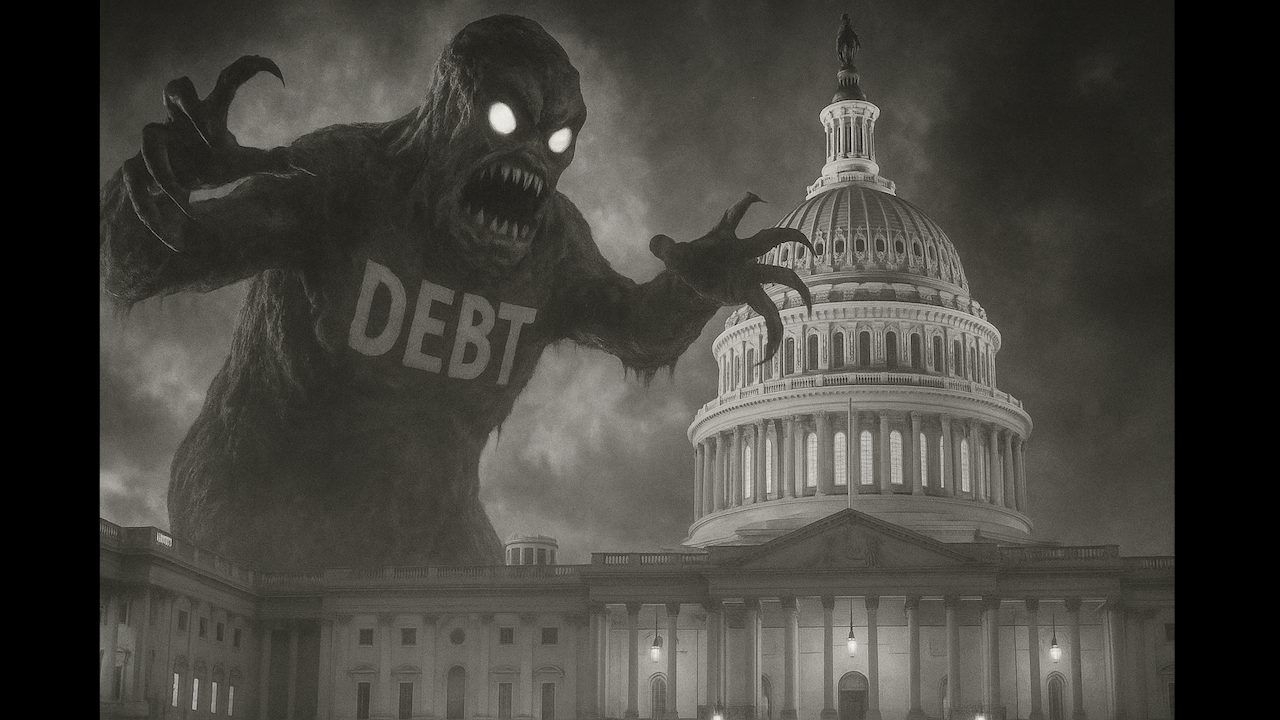(Mike Maharrey, Money Metals News Service) The most surprising thing about Moody’s downgrade of the U.S. government’s credit rating was that so many people seemed surprised. The reaction should have been, “Tell us something we didn’t already know!”
Last Friday, Moody’s cut Uncle Sam’s credit rating by one notch, from AAA to AA1.
“Successive U.S. administrations and Congress have failed to agree on measures to reverse the trend of large annual fiscal deficits and growing interest costs.”
How could anybody not see this coming?
In late March, Moody’s released a pessimistic report on America’s creditworthiness.
“The US’s fiscal strength is on course for a continued multiyear decline, driven by widening federal budget deficits, a rising debt burden and falling debt affordability.”
Way back in November 2023, Moody’s lowered its outlook on the U.S. government credit from “stable” to “negative.” This is often a prelude to a downgrade in the country’s AAA credit rating.
And here we are.
Moody’s is the last of the major credit rating agencies to keep U.S. debt at a AAA rating. Standard & Poor’s (S&P) cut the U.S. sovereign rating a notch from AAA to AA+ in 2011. Fitch followed suit last year, citing “the expected fiscal deterioration over the next three years.”
We’ve known for years that the federal government is in a downward fiscal spiral.
The national debt surged over $36 trillion last fall, and despite some headlines generated by DOGE, there is no sign that the spending is going to slow down.
In fact, spending is up.
The Trump administration blew through $591.77 billion in April. That was 4.4 percent higher than April 2024’s spending. At $4.16 trillion, spending is up 8.9 percent through the first seven months of fiscal 2025.
And the proposed federal budget for next year would add trillions to these already massive deficits.
Stocks fell on the “surprise” move by Moody’s, and bonds also sold off. The 10-year Treasury yield surged to nearly 4.6 percent, and the 30-year hit levels not seen in nearly 18 years.
Again, this isn’t surprising. Moody’s reminds the world that the U.S. is mired in a fiscal mess with no political will to fix it. Why would you lend even more money to your irresponsible, drunk uncle?
The slide in demand for Treasuries exacerbates a growing problem for the federal government. As yields rise, it becomes more and more expensive for the federal government to finance its borrowing and spending problem.
Interest on the national debt cost $101.7 billion in April. That brought the total interest expense for the fiscal year to $684.1 billion, up 9.5 percent over the same period in 2024.
So far, in fiscal 2025, the federal government has spent more on interest on the debt than it has on national defense ($536 billion) or Medicare ($550 billion). The only higher spending category is Social Security ($907 billion).
Uncle Sam paid $1.13 trillion in interest expenses in fiscal 2023. It was the first time interest expense had ever eclipsed $1 trillion. Projections are for interest expense to break that record in fiscal 2025.
Some people think the Federal Reserve can intervene with rate cuts and mitigate Uncle Sam’s interest problem. But the fact is, the Fed has little control over the long end of the yield curve. This was apparent when Treasury yields spiked even after the Fed cut rates last year.
The only thing the Fed can do is run quantitative easing (QE). In QE operations, the central bank buys U.S. Treasuries on the open market, creating additional demand. This typically drives yields lower. However, there is a downside. When running QE programs, the Fed buys bonds with money created out of thin air. This is, by definition, inflation.
In a post on X, Bridgewater Associates founder and billionaire Ray Dalio alluded to this, saying the U.S. debt problem is even bigger than the Moody’s downgrade suggests because credit rating agencies only factor in the likelihood a country won’t pay its debts.
“They don’t include the greater risk that the countries in debt will print money to pay their debts, thus causing holders of the bonds to suffer losses from the decreased value of the money they’re getting (rather than from the decreased quantity of money they’re getting).”
The Moody’s downgrade didn’t tell us anything we didn’t already know. It merely put the issue back in the headlines. However, within weeks, the credit rating will be ancient history, and the federal government will continue borrowing and spending. The fact that Congress is pushing through a tax cut bill that will grow the deficits and wants to raise the debt ceiling by some $5 trillion tells you everything you need to know about Congress’s commitment to addressing the debt issue.
This is nothing but a game of kick the can. Moody’s just reminded us that the road is getting shorter.
Mike Maharrey is a journalist and market analyst for Money Metals with over a decade of experience in precious metals. He holds a BS in accounting from the University of Kentucky and a BA in journalism from the University of South Florida.

